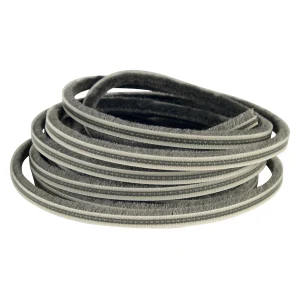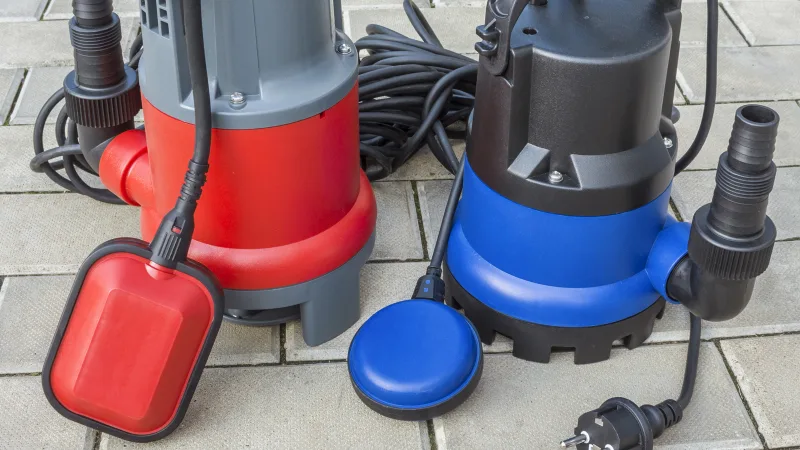Here's How to Prepare Your Home for Floods
Floods are the number one natural hazard in Canada.
Whether limited to your basement or extended throughout the community, a flood can be devastating. Preparation is key to minimizing flood damage and ensuring a safe cleanup afterwards. Here's how get prepared for flood prevention and cleanup.

Flood Prevention
A good flood prevention strategy includes long-term and emergency planning.
Long-term Planning
Flood-proofing your home includes both minor maintenance and major renovations. Some of these updates and upgrades are simple DIY tasks, while others may require professional assistance.


TIP: You don’t have to tackle your flood-prevention action list all at once. Prioritize upgrades based on need and budget.
Home Protection Products
Gear up with the essential equipment and supplies you’ll need to flood-proof your property and deal with emergencies.
TIP: Prioritize your first line flood defense. That includes everything you need to board up windows, vents and doors, plus equipment like a water detector and sump pump.
Emergency Preparedness
Here’s What to Do if There’s a Flood Warning or Evacuation Order
You may only have hours to prepare following a flood warning. Once an evacuation order is issued, you must leave quickly. Plan ahead so you can make the most of your time in each scenario.

TIP: Water can short out electronics, creating a potential fire hazard. Keep a fire extinguisher readily accessible on each floor, and make sure everyone in your home knows how to use it.
Emergency Kit Essentials
Here’s What You’ll Need For Up to 3 Days Away from Home
Create Your Emergency Kit
If you need to evacuate, you may not have time to gather essential items. Plan ahead and keep everything together in a large bin, backpack or hockey bag, so you can quickly load your vehicle and head out. Here are some of the essential things you can add to your kit.
Flood Prevention
A good flood prevention strategy includes long-term and emergency planning.
Long-term Planning
Flood-proofing your home includes both minor maintenance and major renovations. Some of these updates and upgrades are simple DIY tasks, while others may require professional assistance.


TIP: You don’t have to tackle your flood-prevention action list all at once. Prioritize upgrades based on need and budget.
Home Protection Products
Gear up with the essential equipment and supplies you’ll need to flood-proof your property and deal with emergencies.
TIP: Prioritize your first line flood defense. That includes everything you need to board up windows, vents and doors, plus equipment like a water detector and sump pump.
Emergency Preparedness
Here’s What to Do if There’s a Flood Warning or Evacuation Order
You may only have hours to prepare following a flood warning. Once an evacuation order is issued, you must leave quickly. Plan ahead so you can make the most of your time in each scenario.

TIP: Water can short out electronics, creating a potential fire hazard. Keep a fire extinguisher readily accessible on each floor, and make sure everyone in your home knows how to use it.
Emergency Kit Essentials
Here’s What You’ll Need For Up to 3 Days Away from Home
Create Your Emergency Kit
If you need to evacuate, you may not have time to gather essential items. Plan ahead and keep everything together in a large bin, backpack or hockey bag, so you can quickly load your vehicle and head out. Here are some of the essential things you can add to your kit.
Flood Cleanup
Before attempting any cleanup, be sure local authorities have given the all-clear to return to your home. Here’s how to deal with the aftermath of a flood, from assessment and damage control, to cleaning and repairs.
Returning Home After a Flood
Here’s How to Assess & Minimize Flood Damage
Be cautious when returning home after a flood evacuation. Be on the lookout for hazards, such as loose debris, unstable decks and porches, downed power lines and wandering animals.

TIP: Use fans, dehumidifiers and air conditioners to dry out your home as quickly as possible, as mould can start growing within a day or two of floodwaters draining.
Safe Cleanup & Repairs
Here’s How to Clean Up After a Flood
Before beginning your cleanup, make sure you have personal protective gear to stay safe. This includes dust masks, goggles, safety boots, rubber gloves and long-sleeve shirts and pants.

TIP: Dry your carpets as fast as possible to avoid mould and mildew, but let your wood dry slowly to help prevent it from warping or splitting.
Here’s How to Drain a Flooded Basement

Step 1:
Don’t pump the water out too quickly, as pressure from the waterlogged soil outside can cause your basement walls to cave in.
Step 2:
Pump the water down to three feet, then check it the next day. If the water level has risen, wait another day and then pump the water down to three feet again. Repeat this process until the water level remains stable.
Step 3:
Once stable, you can safely pump out all the remaining water.
Find the best sump for your needs here.














